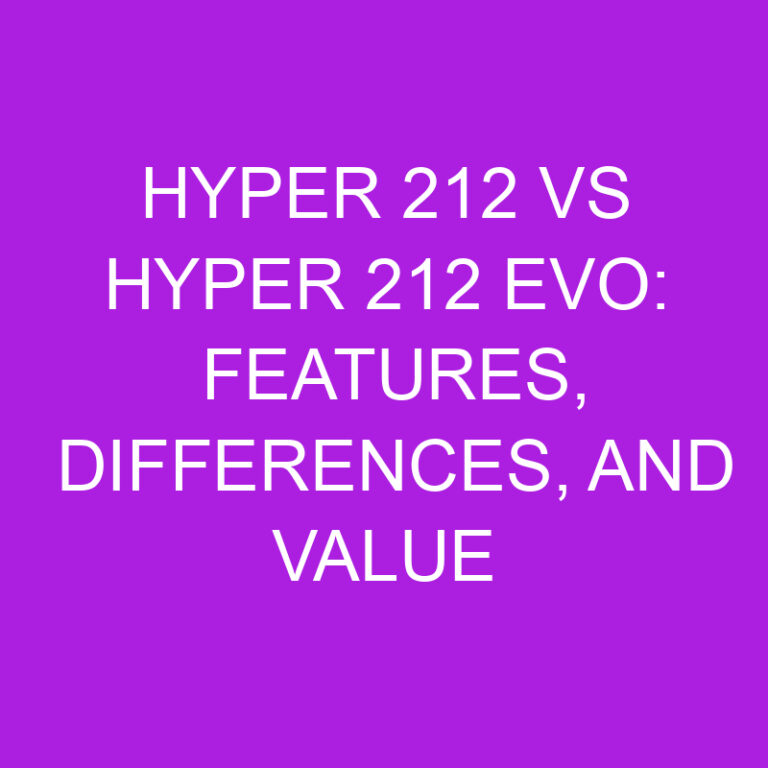
Energy monitoring systems play a crucial role in helping users track and manage their electricity consumption effectively. Among the leading options in the market are IoTaWatt, Sense, Emporia, and Eyedro Energy Monitors. In this comprehensive comparison, we’ll explore the features, functionalities, pros, and cons of each to help you determine which one best fits your energy monitoring needs.
Post Contents
- IoTaWatt
- Sense
- Emporia
- Eyedro Energy Monitor
- Conclusion
- (FAQs) about IoTaWatt, Sense, Emporia, and Eyedro Energy Monitors
- 1. What is an energy monitor, and why do I need one?
- 2. How do these energy monitors differ from traditional utility meters?
- 3. Can I install these energy monitors myself, or do I need professional assistance?
- 4. Are these energy monitors compatible with renewable energy systems like solar panels?
- 5. How accurate are the device detection capabilities of these energy monitors?
- 6. Can I access my energy usage data remotely with these energy monitors?
- 7. Do these energy monitors provide historical data analysis and trends?
- 8. Are there any ongoing subscription fees or additional costs associated with these energy monitors?
- 9. Can these energy monitors help me identify energy-saving opportunities in my home or business?
- 10. How do I choose the right energy monitor for my needs?
IoTaWatt
Overview:
IoTaWatt is a versatile energy monitoring system designed for both residential and commercial applications. It offers real-time monitoring of energy consumption for individual circuits, providing users with detailed insights into their electricity usage.
Key Features:
- Multi-circuit monitoring: IoTaWatt supports monitoring of multiple circuits simultaneously, allowing users to track energy consumption at the circuit level.
- Data logging: The system records energy usage data over time, enabling users to analyze trends and identify areas for energy optimization.
- Expandability: IoTaWatt is expandable, allowing users to add additional monitoring units to accommodate larger electrical systems.
- Open-source software: IoTaWatt utilizes open-source software, providing users with flexibility and customization options for data analysis and integration with other smart home systems.
Pros:
- Accurate monitoring of individual circuits
- Expandable system for scalability
- Open-source software for customization
- Real-time data visualization through web interface
Cons:
- Requires some technical knowledge for setup and configuration
- Limited compatibility with third-party smart home platforms
Sense
Overview:
Sense is an intelligent home energy monitor that provides users with insights into their electricity usage and helps identify energy-saving opportunities. It employs machine learning algorithms to disaggregate energy consumption data and detect individual devices within the home.
Key Features:
- Device detection: Sense uses machine learning algorithms to identify and categorize individual devices based on their energy signatures, providing users with detailed breakdowns of energy usage.
- Real-time monitoring: The system offers real-time monitoring of energy consumption, allowing users to track usage patterns and receive alerts for unusual activity.
- Mobile app integration: Sense integrates with a mobile app, enabling users to monitor their energy usage remotely and receive notifications on their smartphones.
- Energy comparison: Sense provides users with insights into how their energy usage compares to similar homes in their area, helping them benchmark their consumption.
Pros:
- Advanced device detection capabilities
- Real-time monitoring and alerts
- Mobile app for remote monitoring
- Energy comparison insights
Cons:
- Device detection may not be 100% accurate
- Limited compatibility with certain electrical configurations
- Higher initial cost compared to basic energy monitors
Emporia
Overview:
Emporia offers a range of energy monitoring products designed for residential and commercial applications, including smart meters, energy monitors, and cloud-based software solutions. Its energy monitors provide users with real-time data on electricity usage and costs.
Key Features:
- Real-time monitoring: Emporia’s energy monitors offer real-time tracking of electricity usage, allowing users to monitor consumption levels and costs.
- Mobile app integration: The system integrates with a mobile app, enabling users to access energy usage data remotely and receive notifications on their smartphones.
- Historical data analysis: Emporia’s cloud-based software allows users to analyze historical energy usage data, identify trends, and make informed decisions about energy conservation measures.
- Flexible installation options: Emporia’s energy monitors can be installed either inside the electrical panel or externally, providing flexibility to suit different installation requirements.
Pros:
- Real-time monitoring and cost tracking
- Mobile app for remote access and notifications
- Historical data analysis for trend identification
- Flexible installation options
Cons:
- Limited compatibility with certain electrical configurations
- Some users may find the mobile app interface complex
- Occasional connectivity issues reported by users
Eyedro Energy Monitor
Overview:
Eyedro Energy Monitor is a comprehensive energy monitoring system designed for residential and commercial applications. It provides users with real-time data on electricity usage, enabling them to track consumption patterns and identify areas for energy efficiency improvements.
Key Features:
- Real-time monitoring: Eyedro Energy Monitor offers real-time tracking of electricity usage, allowing users to monitor consumption levels and costs.
- Cloud-based data storage: The system securely stores energy usage data in the cloud, enabling users to access historical data and generate reports for analysis.
- Energy disaggregation: Eyedro employs advanced algorithms to disaggregate energy usage data and identify individual appliances and devices within the home.
- User-friendly interface: Eyedro’s web-based interface provides users with easy access to energy usage data, customizable dashboards, and interactive charts for data visualization.
Pros:
- Real-time monitoring and cost tracking
- Cloud-based data storage for historical analysis
- Energy disaggregation for appliance-level insights
- User-friendly web interface for easy access to data
Cons:
- Some users may experience issues with device detection accuracy
- Limited compatibility with certain electrical configurations
- Initial setup may require assistance for non-technical users
Conclusion
In conclusion, IoTaWatt, Sense, Emporia, and Eyedro Energy Monitors offer a range of features and functionalities to meet diverse energy monitoring needs. While IoTaWatt excels in multi-circuit monitoring and expandability, Sense stands out for its advanced device detection capabilities. Emporia offers flexibility in installation options and cloud-based data analysis, while Eyedro provides a user-friendly interface and energy disaggregation features.
Ultimately, the best choice depends on individual preferences, budget, and specific requirements for energy monitoring. Whether you prioritize real-time monitoring, device detection accuracy, or historical data analysis, there’s likely a solution among these energy monitors that aligns with your needs.
(FAQs) about IoTaWatt, Sense, Emporia, and Eyedro Energy Monitors
1. What is an energy monitor, and why do I need one?
An energy monitor is a device that tracks and measures electricity consumption in your home or business. It provides valuable insights into your energy usage patterns, helping you identify areas for efficiency improvements and potentially lower your energy bills.
2. How do these energy monitors differ from traditional utility meters?
Traditional utility meters provided by utility companies measure overall energy consumption for billing purposes. Energy monitors, on the other hand, offer more detailed insights by monitoring individual circuits or devices within your home, allowing for better understanding and management of energy usage.
3. Can I install these energy monitors myself, or do I need professional assistance?
Installation requirements vary depending on the specific energy monitor and your electrical system. While some models may be suitable for DIY installation, others may require professional assistance, especially if they need to be installed inside the electrical panel. Always refer to the manufacturer’s instructions and guidelines for installation.
4. Are these energy monitors compatible with renewable energy systems like solar panels?
Yes, many of these energy monitors are compatible with renewable energy systems like solar panels. They can track both energy consumption from the grid and energy generation from renewable sources, providing users with a comprehensive view of their overall energy usage and production.
5. How accurate are the device detection capabilities of these energy monitors?
The accuracy of device detection can vary depending on factors such as the complexity of your electrical system and the specific algorithms used by the energy monitor. While some models may accurately detect and categorize individual devices, others may have limitations, particularly with less common or variable load devices.
6. Can I access my energy usage data remotely with these energy monitors?
Yes, many of these energy monitors offer mobile app integration or web-based interfaces that allow users to access their energy usage data remotely. This feature enables users to monitor their energy consumption in real-time and receive notifications or alerts on their smartphones or other devices.
7. Do these energy monitors provide historical data analysis and trends?
Yes, most of these energy monitors offer historical data analysis features that allow users to track their energy usage over time, identify trends, and make informed decisions about energy conservation measures. This information can be valuable for optimizing energy efficiency and reducing energy costs.
8. Are there any ongoing subscription fees or additional costs associated with these energy monitors?
The cost structure varies depending on the specific energy monitor and any additional features or services included. While some models may have upfront costs only, others may require ongoing subscription fees for access to premium features or cloud-based services. Be sure to review the pricing details carefully before making a purchase.
9. Can these energy monitors help me identify energy-saving opportunities in my home or business?
Yes, one of the primary benefits of these energy monitors is their ability to help users identify energy-saving opportunities by providing insights into energy consumption patterns and behaviors. By understanding how and when energy is being used, users can implement targeted strategies to reduce waste and improve efficiency.
10. How do I choose the right energy monitor for my needs?
When selecting an energy monitor, consider factors such as your specific monitoring requirements, budget, installation preferences, and compatibility with your electrical system. Compare features, read user reviews, and consult with experts if needed to determine which energy monitor best fits your needs and preferences.
These FAQs provide valuable insights into common questions about IoTaWatt, Sense, Emporia, and Eyedro Energy Monitors, helping users make informed decisions when selecting an energy monitoring solution for their home or business.






